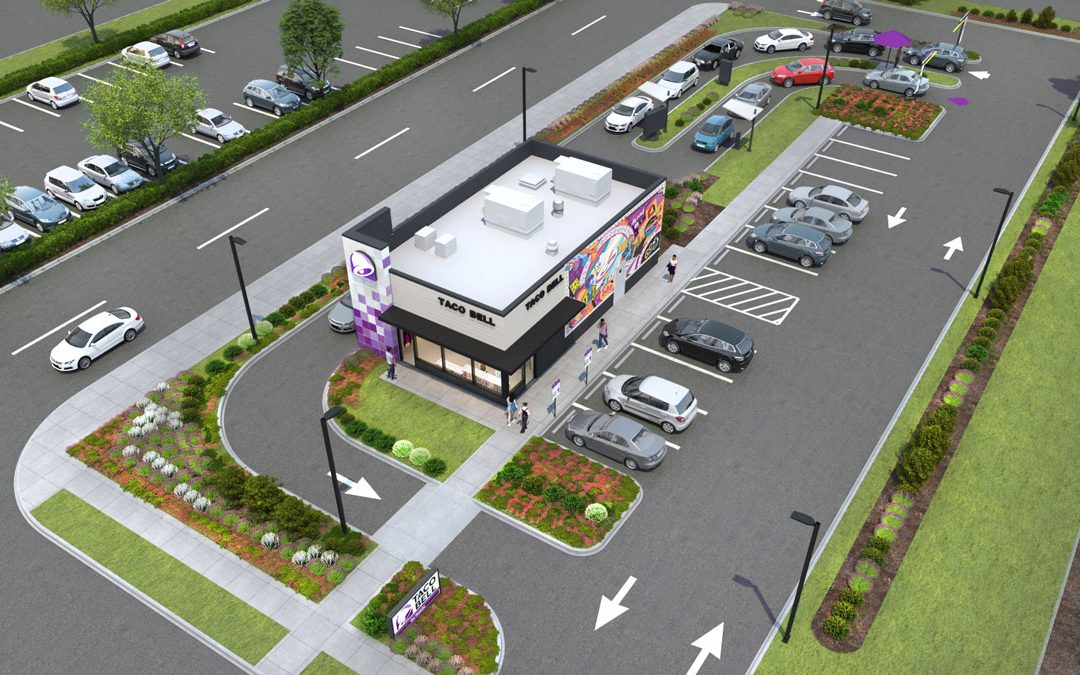Taco Bell unveiled its new Go Mobile store prototype, which is a lean off-premises machine designed to be heavy on drive-thru and digital orders. The new model contains a secondary drive-thru lane for digital-order pickup and dedicated spots for curbside pickup or carryout orders.
Mike Grams, global COO at Taco Bell, said a lot of this has been in the works for years, but COVID-19 prompted a shotgun marriage of all the technologies and low-friction ideas.
“The roadmap was established as customers converted to digital,” said Grams. “As digital opened up and dining rooms closed, we leaned in a little faster. COVID definitely accelerated it.”
For a company that is endlessly searching for ways to shed seconds off drive-thru service times, the first move was just getting potentially mismatched digital orders and traditional drive-thru orders separated.
“First step for us is creating access for customers that choose mobile, the dual lanes one being dedicated to a priority pickup, then there’s still going to be a large percentage of traditional customers. We want to be able to take care of both,” said Grams.
The company already has two typical production lines and many restaurants have a third “speed line” for digital orders to make the drive-thru especially efficient. Taco Bell’s new menu revamp that focuses on star items will help push that even further by removing some complexity.
The novel part of it all is smart routing of both consumers and orders. Grams said it’s the same kind of thinking that changed the airport experience over the past decade.
“Now they put that process online but when they arrive, they had this long security line, they created pre-check. That’s the kind of thinking we’re applying to the whole drive-thru experience,” said Grams. “It’s not hard to understand in a drive-thru and the pain points, so just watching and listening you can prioritize the technology.”
It’s a goal the company has spent a decade working toward, but now the infrastructure is in place.
When an order arrives in the model, each item will go to the correct production line to “load balance” the work for employees. When the order is ready the customer will also be directed to the ideal place. Maybe that’s the digital pickup lane for a small digital order, or if it’s off-peak hours, maybe that digital customer still uses the standard drive-thru. For a delivery driver with a large order, the most efficient might be curbside or parking and coming in.
“It’s really an omnichannel approach,” sad Grams.
At peak times when Taco Bell still gets a huge portion of orders, the company will employ “bellhops” to direct the traffic in the parking lot, routing those various consumers to the most efficient spot.


